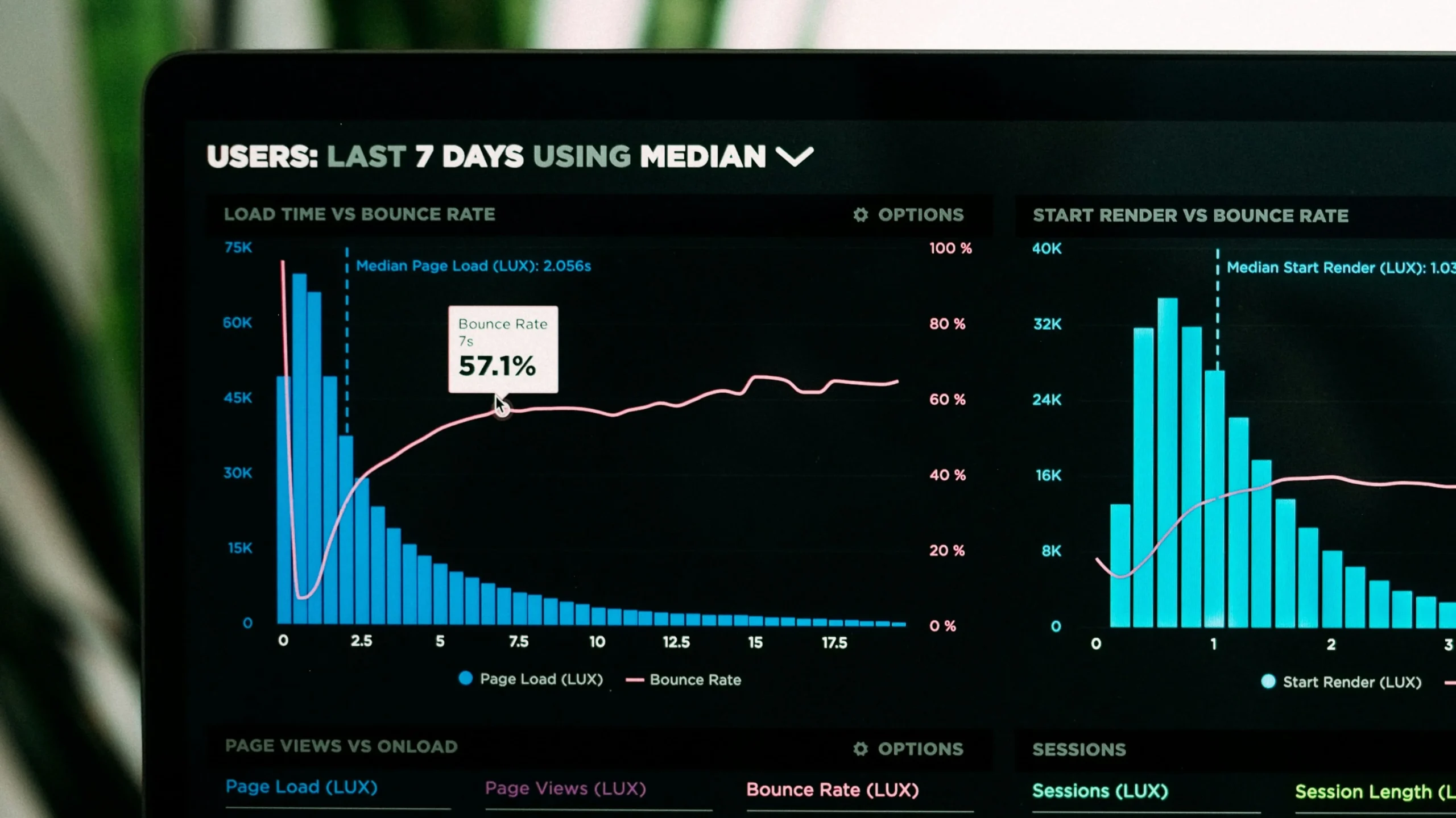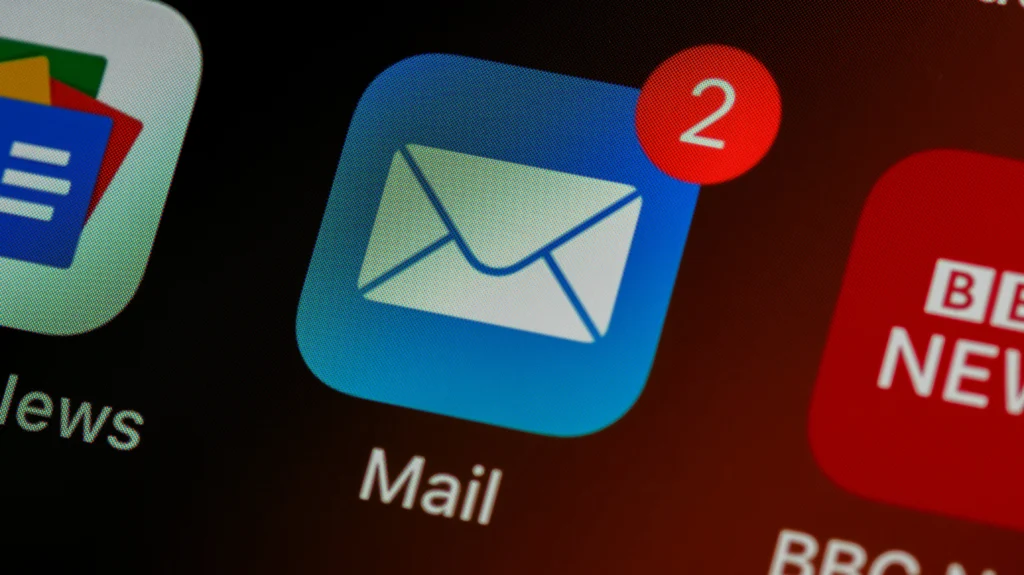Email remains a powerful tool for engaging with customers, driving sales, and building brand loyalty. However, simply sending out emails is not enough; understanding and analyzing the performance of these campaigns is crucial. This is where email marketing metrics come into play. These metrics provide valuable insights into how your audience interacts with your emails, helping you set your strategies and achieve better results.
Below, we analyze the essential email marketing metrics, explore how to track them effectively, and show formulas for using these insights to enhance your campaigns and drive significant engagement with your audience.
Why monitoring email marketing metrics is crucial
Email marketing metrics are quantifiable measures used to estimate the performance and effectiveness of email marketing campaigns. The metrics deliver insights into various aspects of an email’s interaction with its recipients, from how many people open the email to how many ultimately take the desired action, such as purchasing or filling out a form.
These email metrics provide a comprehensive view of an email campaign’s performance and can help marketers understand what is working and what needs improvement.
Comprehending and using email marketing metrics offer multiple advantages, enabling businesses to boost their strategies and achieve better results. Here are some of the crucial benefits:
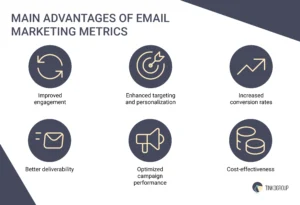
Improved engagement
Marketers can analyze email metrics such as open and click-through rates to identify which subject lines, email content, and call-to-actions (CTAs) resonate most with their audience. This insight allows for creating more engaging and personalized content that is more likely to catch the recipient’s attention and prompt interaction.
Enhanced targeting and personalization
These email metrics provide valuable data about recipient behavior and preferences. By segmenting the audience based on these insights, marketers can tailor their emails to specific groups, delivering more relevant and personalized content. For instance, if a particular segment shows a higher interest in a specific product or service, marketers can create targeted campaigns that address that segment’s unique needs and interests, leading to higher conversion rates.
Increased conversion rates
Monitoring conversion rates helps businesses understand how effectively their email campaigns drive recipients to complete desired actions, such as purchasing or signing up for a webinar. By identifying the elements that contribute to higher conversion rates, such as compelling CTAs or attractive offers, marketers can optimize their emails to increase conversions. This targeted approach grows revenue and enhances email marketing efforts’ overall return on investment (ROI).
Better deliverability
Tracking bounce rates and spam complaints is crucial for maintaining a healthy email list and ensuring emails reach the intended recipients. High bounce rates can indicate issues with the quality of the email list, such as outdated or incorrect email addresses. Similarly, high spam complaint rates can damage a sender’s reputation and lead to emails being blocked by Internet service providers (ISPs). By regularly monitoring and addressing these email marketing metrics, businesses can improve their deliverability rates and guarantee their messages reach the inbox rather than the spam folder.
Optimized campaign performance
Email marketing metrics clearly show campaign performance, allowing marketers to identify strengths and weaknesses. For example, if a campaign has a high open rate but a low click-through rate, this might indicate that while the subject line is effective, the email content or CTA needs improvement. Businesses can optimize their email marketing campaigns for better performance by continually analyzing these metrics and making data-driven adjustments.
Cost-effectiveness
In fact, email marketing is known for its cost-effectiveness compared to other marketing channels. By utilizing email metrics to refine and improve campaigns, businesses can maximize the efficiency of their marketing spend. This means achieving higher engagement and conversion rates without a significant increase in cost, resulting in a better ROI.
Strategic cost planning should also consider the pros and cons of offshore vs onshore data annotation when working with labeled datasets.
8 most important email marketing metrics
Our expert team prepared eight essential email marketing metrics that every marketer should monitor and analyze. We explore their definitions, importance, factors influencing them, strategies to improve them, and methods for measurement and analysis. Let’s check them in more detail!
1. Open rate
Within various email marketing performance metrics, this rate is a fundamental metric that measures the percentage of recipients who open a given email. It is calculated by dividing the number of unique opens by the total number of emails sent, excluding bounces, and multiplying by 100 to get a percentage. Open rate is an initial indicator of how well your subject line and sender name resonate with your audience.
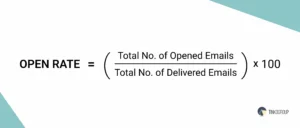
Several factors influence the open rate of an email:
- Subject line: A compelling, clear, and relevant subject line can significantly impact whether recipients decide to open an email.
- Sender name: Recipients are likelier to open emails they recognize and trust from senders.
- Timing: The day and time when an email is sent can affect open rates. It’s essential to identify when your audience is most likely to check their emails.
- Personalization: Emails with personalized subject lines and content can boost open rates.
- Preheader text: The snippet of text that appears next to or below the subject line can provide additional incentive to open the email.
Improving your open rate requires a strategic approach. Here are some effective strategies:
- Create compelling subject lines: Subject lines should be attention-grabbing and give a clear idea of the email content. Avoid using spammy words like “free” or excessive punctuation marks.
- Optimize sender name: Use a recognizable and trustworthy sender name. Use a natural person’s name from your company to add a personal touch if possible.
- Segment your audience: Different segments of your audience may respond better to different types of content. By segmenting your list, you can send more relevant emails to each group.
- Test send times: Experiment with sending emails at different times and days to see when your audience is most responsive.
- Use A/B testing: Test different subject lines, sender names, and preheader texts to see which combinations yield the highest open rates.
- Engage inactive subscribers: Regularly clean your email list to remove inactive subscribers. Before removing them, you can also run re-engagement campaigns to win back these subscribers.
2. Conversion rate
Among key email marketing metrics, the conversion rate measures the percentage of email recipients who complete a desired action after clicking on a link within an email. This action could be purchasing, filling out a form, downloading a resource, or any other goal that aligns with your campaign objectives. The conversion rate is calculated by dividing the number of conversions by the number of delivered emails and multiplying by 100 to get a percentage. It is one of the best email campaign metrics as it directly correlates with the effectiveness of your email campaigns in driving business outcomes.
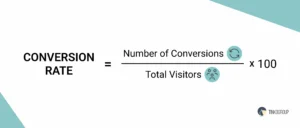
Several factors influence the conversion rate of an email campaign:
- Relevance of content: The content of the email must be relevant and valuable to the recipient.
- Landing page quality: The landing page where recipients are directed should be well-designed, user-friendly, and aligned with the email’s message.
- Call-to-action (CTA): Clear, compelling CTAs that stand out can significantly impact conversion rates.
- Segmentation and personalization: Emails personalized and targeted to specific segments are more likely to convert.
- Email design: A visually appealing and easy-to-read email design enhances user experience and encourages conversions.
- Trust and credibility: Including elements that build trust, such as testimonials, secure transaction assurances, and clear contact information, can boost conversions.
To improve your conversion rate, consider the following strategies:
- Create relevant content: Ensure that your email content addresses the needs and interests of your audience. Provide valuable information, offers, or solutions that resonate with them.
- Optimize landing pages: Ensure that the landing page seamlessly continues the email content. It should be optimized for conversions with clear CTAs, minimal distractions, and a mobile-friendly design.
- Craft compelling CTAs: Your CTAs should be clear, concise, and action-oriented. Use strong verbs and create a sense of urgency or exclusivity.
- Use personalization: Personalize your emails based on recipient behavior, preferences, and past interactions. Personalization can significantly enhance the relevance and effectiveness of your emails.
- Segment your audience: Divide your email list into segments based on demographics, behavior, purchase history, and other criteria. Tailor your emails to each segment to increase their relevance and appeal.
- A/B testing: Test different elements of your emails, such as subject lines, CTAs, images, and content, to determine what drives the highest conversion rates. Use the insights from these tests to optimize future campaigns.
- Provide social proof: To build trust and credibility, include testimonials, reviews, case studies, or user-generated content in your emails.
- Ensure mobile optimization: Many users access emails on mobile devices, so ensure that your emails and landing pages are mobile-friendly.
3. Click-through rate (CTR)
As one of the crucial email marketing metrics, click-through rate measures the percentage of email recipients who click on one or more links in an email. It is calculated by dividing the number of clicks by the number of emails delivered, then multiplying by 100 to get a percentage. CTR is crucial because it indicates the effectiveness of the email content and the level of engagement it generates among recipients.
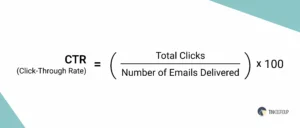
Several elements influence the click-through rate of an email campaign:
- Relevance of content: The more relevant and valuable the content is to the recipients, the higher the likelihood they will click on the links.
- Email design and layout: A well-designed email with a clear structure and visually appealing elements can enhance user experience and encourage clicks.
- Call-to-action (CTA): Clear, compelling, and strategically placed CTAs can significantly impact the CTR.
- Personalization: Personalized emails that address the recipient’s specific needs and preferences can boost engagement and click-through rates.
- Timing: The timing of the email sent can affect how many recipients open and engage with the email.
- Mobile optimization: Many users access emails on mobile devices, so it is essential to ensure that emails are mobile-friendly to encourage clicks.
To improve your click-through rate, implement the following strategies:
- Create engaging content: Ensure your email content is interesting, valuable, and relevant to your audience. Mix text, images, and videos to make the content more engaging.
- Optimize email design: Use a clean, visually appealing design with a clear layout. Ensure the email is easy to read and navigate, with clickable elements that stand out.
- Create attractive CTAs: Your CTAs should be prominent, clear, and action-oriented. Use persuasive language and create a sense of urgency to encourage clicks.
- Segment your audience: Divide your email list into smaller segments based on criteria such as demographics, behavior, and purchase history. Tailor your content and offers to each segment to increase relevance and engagement.
- Use personalization: Personalize your emails with the recipient’s name, preferences, and past interactions. Personalized content is more likely to resonate with recipients and drive clicks.
- A/B testing: Test different elements of your emails, such as subject lines, CTAs, images, and content, to see what drives the highest CTR. Use the insights from these tests to optimize future campaigns.
- Include social proof: Incorporate testimonials, reviews, case studies, or user-generated content to build trust and encourage recipients to click.
- Ensure mobile optimization: Optimize your emails for mobile devices using responsive design and ensuring all links and CTAs are easily clickable on small screens.
4. Bounce rate
This rate within email performance metrics refers to the percentage of emails that are not successfully delivered to the recipient’s inbox. There are two types of bounces: hard bounces and soft bounces. Hard bounces occur when an email is permanently undeliverable due to an invalid email address. Soft bounces happen when an email is temporarily undeliverable, such as when the recipient’s mailbox is full. The bounce rate is calculated by dividing the number of bounced emails by the number of emails sent and multiplying by 100 to get a percentage. Monitoring bounce rate is crucial because it affects email deliverability and sender reputation.
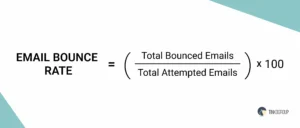
Several aspects can contribute to a high bounce rate:
- Email list quality: Poor-quality or outdated email lists often contain invalid or inactive email addresses.
- Recipient server issues: Problems with the recipient’s email server, such as downtime or full mailboxes, can result in soft bounces.
- Spam filters: Emails that trigger spam filters may be bounced.
- Recipient’s Email Settings: Some recipients may have settings blocking certain emails or unknown senders.
- Content issues: Recipient servers may reject emails containing large attachments, specific keywords, or poorly formatted HTML.
To reduce your bounce rate and improve email deliverability, consider the following strategies:
- Maintain a clean email list: Regularly clean your email list to remove invalid or inactive email addresses. Use email verification tools to identify and eliminate hard bounces before sending emails.
- Use double opt-in: Implement a double opt-in process where subscribers confirm their email address before being added to your list. This ensures that the email addresses are valid and that recipients are genuinely interested in receiving your emails.
- Monitor bounce rates: Regularly monitor your bounce rates to promptly identify and address any issues. Track both hard and soft bounces and take appropriate action to resolve them.
- Segment your list: Segment your email list to send more relevant and targeted content. This can help reduce the likelihood of your emails being marked as spam or bounced.
- Optimize email content: Ensure your email content is well-formatted, avoids large attachments, and does not contain spammy keywords. Use plain text and HTML versions to accommodate different email clients.
- Authenticate your emails: Use email authentication protocols such as SPF (Sender Policy Framework), DKIM (DomainKeys Identified Mail), and DMARC (Domain-based Message Authentication, Reporting, and Conformance) to verify your email’s legitimacy and improve deliverability.
- Monitor sender reputation: Use tools to monitor your sender reputation. A poor reputation can lead to higher bounce rates and lower deliverability.
- Engage with your audience: Send regular, relevant emails to keep your audience engaged. Inactive subscribers are more likely to have email addresses that become invalid over time.
5. Return on investment (ROI)
In the top email marketing metrics list, return on investment measures the financial return generated from an email campaign relative to its cost. It is calculated by dividing the net profit from the campaign by the total cost of the campaign and then multiplying by 100 to get a percentage. ROI is among crucial marketing email metrics because it provides a clear picture of the effectiveness and profitability of your email marketing efforts. A high ROI indicates that your campaigns generate significant revenue compared to their cost, making it a key indicator of success.
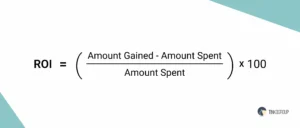
Several factors can influence the ROI of an email marketing campaign:
- Campaign cost: The total campaign cost, including design, copywriting, software, and other expenses, impacts ROI.
- Revenue generated: The total revenue generated from the campaign, including direct sales, leads, and other conversions, directly affects ROI.
- Targeting and segmentation: Targeting the right audience with relevant content can significantly enhance engagement and conversions, boosting ROI.
- Email design and content: Compelling design and content that resonate with recipients can drive higher engagement and conversions.
- Personalization and automation: Personalized and automated emails can improve relevance and efficiency, leading to higher ROI.
- Testing and optimization: Continuous campaign testing and optimization can improve email marketing performance and ROI over time.
To enhance the ROI of your email marketing campaigns, consider implementing the following strategies:
- Set clear goals and KPIs: Define clear goals and key performance indicators (KPIs) for your email campaigns. This helps you measure success and optimize for better ROI.
- Segment your audience: Use segmentation to target different groups within your email list with tailored content. This increases relevance and engagement, leading to higher conversions and ROI.
- Personalize your emails: Personalize your emails with the recipient’s name, preferences, and past interactions. Personalized emails are more likely to resonate with recipients and drive higher engagement and conversions.
- Use automation: Implement email automation to send timely and relevant messages based on recipient behavior and lifecycle stages. Automated emails can improve efficiency and effectiveness, boosting ROI.
- Create compelling content: Ensure your email content is valuable, relevant, and engaging. Use a mix of text, images, and videos to capture attention and drive action.
- Optimize email design: Use a clean, visually appealing design with clear CTAs. Ensure your emails are mobile-friendly to reach recipients on all devices.
- Test and optimize: Continuously test different elements of your emails, such as subject lines, CTAs, content, and design. Use A/B testing to identify what works best and optimize for better performance.
- Track and analyze performance: Use analytics tools to track the performance of your campaigns. Monitor key email marketing metrics such as open rates, click-through rates, conversion rates, and ROI. Analyze the data to identify patterns and areas for improvement.

Reliable Data Services Delivered By Experts
We help you scale faster by doing the data work right - the first time

6. List growth rate
This rate measures how your email subscriber list grows over a specific period. It is calculated by subtracting the number of unsubscribes and bounces from the number of new subscribers gained, then dividing by the total number of subscribers and multiplying by 100 to get a percentage. Within various email campaign metrics, this rate is crucial because a healthy, growing email list is essential for expanding your reach, engaging new potential customers, and driving ongoing marketing success.
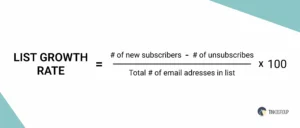
Several factors can influence the list growth rate:
- Lead generation strategies: The effectiveness of your lead generation tactics, such as website sign-up forms, landing pages, and content offers, impacts list growth.
- Incentives and offers: Offering incentives such as discounts, free trials, or exclusive content can attract more subscribers.
- Marketing channels: Various marketing channels, including social media, paid ads, and offline events, can drive more traffic to your sign-up forms.
- Content quality: High-quality content that resonates with your audience can encourage more sign-ups.
- User experience: A seamless and user-friendly sign-up process can reduce friction and increase conversions.
- Brand reputation: A strong and trustworthy brand reputation can attract more subscribers.
To enhance your list growth rate, consider implementing the following strategies:
- Optimize sign-up forms: Ensure your sign-up forms are easy to find and fill out. Place them prominently on your website and landing pages. Keep the form fields to a minimum to reduce friction.
- Offer incentives: To encourage sign-ups, provide incentives such as discounts, free trials, exclusive content, or entry into a giveaway.
- Create valuable content: Develop high-quality content that addresses your audience’s needs and interests. Offer valuable resources such as ebooks, whitepapers, webinars, or email courses in exchange for email addresses.
- Use social media: Use your social media channels to promote your email list. Share sign-up forms, highlight the benefits of subscribing, and offer exclusive content for your social media followers.
- Run paid campaigns: Use paid advertising to drive traffic to your sign-up forms. Target your ads to your ideal audience to attract quality subscribers.
- Use pop-ups and slide-ins: Implement pop-ups and slide-ins on your website to capture visitors’ attention and encourage them to subscribe. Ensure these are well-timed and non-intrusive.
- Promote at events: Collect email addresses at offline events such as trade shows, conferences, or workshops. Offer attendees the option to subscribe to your email list for follow-up information and exclusive offers.
- Refine your targeting: Continuously analyze the email performance of your list-building efforts and refine your targeting strategies. Focus on attracting subscribers who are genuinely interested in your content and offers.
7. Forwarding rate/email sharing
The forwarding rate, or email sharing rate, measures the percentage of email recipients who forward your email to a friend or share it on social media. It is calculated by dividing the number of shares or forwards by the total number of delivered emails and multiplying by 100 to get a percentage. This one of the best email marketing metrics is important because it indicates the level of engagement and the value recipients find in your email content. A high forwarding rate suggests that your content is compelling enough for recipients to share with others, thereby increasing your reach and potential for gaining new subscribers.
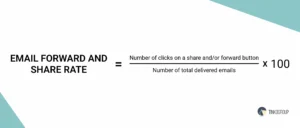
Several aspects can influence the forwarding rate of an email campaign:
- Content relevance: Highly relevant and valuable content will likely be shared.
- Engaging subject lines: Subject lines that capture attention can encourage recipients to open and share the email.
- Clear CTAs for sharing: Including clear calls-to-action (CTAs) that encourage recipients to share the email can boost forwarding rates.
- Incentives for sharing: Offering incentives for sharing, such as discounts or entry into a giveaway, can motivate recipients to forward your email.
- Social proof: Emails with testimonials, reviews, or user-generated content can be more shareable.
- Easy sharing options: Providing easy-to-use email and social media sharing buttons can facilitate sharing.
To improve your forwarding rate and encourage recipients to share your emails, consider the following strategies:
- Create share-worthy content: Focus on creating high-quality, valuable, and engaging content that recipients will want to share with others. This could include informative articles, exclusive offers, or entertaining content.
- Use compelling subject lines: Craft subject lines that grab attention and pique curiosity. A strong subject line can increase the likelihood that recipients will open and share your email.
- Include clear CTAs for sharing: Make it easy for recipients to share your email by including clear CTAs and sharing buttons. Use phrases like “Share with a friend” or “Forward this email” to prompt action.
- Offer incentives for sharing: Provide incentives for recipients to share your email, such as discounts, free trials, or entry into a giveaway. Make sure the incentives are appealing and relevant to your audience.
- Use social proof: Include testimonials, reviews, or user-generated content in your emails. Social proof can increase the perceived value of your content and encourage sharing.
- Add social sharing buttons: Include social sharing buttons in your emails to encourage recipients to share your content on their social media networks.
- Highlight exclusive content: Emphasize exclusive content or offers that recipients can share with friends. People are more likely to share content that provides value or benefits to others.
- Personalize your emails: Personalize your emails to make them more relevant and engaging for recipients. Personalized content is more likely to be shared.
8. Unsubscribe rate
This rate measures the percentage of email recipients who opt out of receiving future emails from your business. It is calculated by dividing the number of unsubscribes by the number of delivered emails and multiplying by 100 to get a percentage. As one of the vital email marketing metrics, this rate provides insights into the health of your email list and the effectiveness of your email content. A high unsubscribe rate may indicate that your emails are not meeting recipients’ expectations or that your list includes people uninterested in your content.
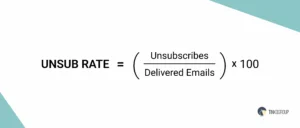
Several factors can influence the unsubscribe rate of an email campaign:
- Email relevance: Irrelevant or low-quality content can increase unsubscribe rates.
- Email frequency: Sending emails too frequently or not frequently enough can cause recipients to unsubscribe.
- Content value: Emails that do not provide value to recipients are more likely to result in unsubscribes.
- List quality: A poorly targeted or outdated email list can include recipients uninterested in your content.
- Expectations management: If recipients’ expectations regarding content, frequency, or value are not met, they may unsubscribe.
- Email design and usability: Poorly designed emails or those that are difficult to read can lead to higher unsubscribe rates.
To reduce your unsubscribe rate and retain more subscribers, consider the following strategies:
- Segment your audience: Use segmentation to target different groups within your email list with tailored content. This increases relevance and reduces the likelihood of unsubscribes.
- Personalize your emails: Personalize your emails with the recipient’s name, preferences, and past interactions. Personalized emails are more likely to resonate with recipients and reduce unsubscribes.
- Provide value: Focus on creating high-quality, valuable content that addresses your audience’s needs and interests. Offer exclusive offers, useful information, or entertaining content to keep subscribers engaged.
- Set clear expectations: Clearly communicate what subscribers can expect regarding content and frequency when they sign up. Deliver these expectations consistently to build trust and reduce unsubscribes.
- Optimize email frequency: Find the right balance in email frequency. Test different sending schedules to determine what works best for your audience and adjust accordingly.
- Use engaging subject lines: Craft compelling subject lines that accurately reflect the content of the email. Avoid misleading or clickbait subject lines that can lead to dissatisfaction and unsubscribes.
- Ask for feedback: When someone unsubscribes, ask for feedback to understand why they opt out. Use this information to improve your email strategy.
- Offer preferences: Provide subscribers with options to manage their email preferences, such as selecting the type of content they want to receive or adjusting the email frequency. This can help retain subscribers who might otherwise unsubscribe.
Conclusion
Analyzing email marketing metrics is essential for any business aiming to optimize its digital marketing strategy. By closely monitoring key email metrics, marketers can better understand their audience’s behavior and preferences. This data-driven approach enables the creation of more targeted, relevant, and effective email campaigns. Additionally, regularly adjusting strategies based on these insights can improve engagement, higher conversion rates, and a more substantial return on investment.
Our B2B email list-building services are designed to provide you with high-quality, targeted lists that can significantly enhance your campaign performance. Contact us for robust data and expert insights to help your email marketing efforts.
Which are the most important metrics to track in email marketing?
They are the open rate (percentage of recipients who open your email), the click-through rate (percentage of recipients who click on links), the conversion rate (percentage of recipients who complete an action), and the bounce rate (percentage of emails that couldn't be delivered).
What should we look for in email marketing analytics?
When analyzing email marketing data, focus on engagement metrics, delivery metrics, behavioral insights, segmentation performance, conversion metrics, and more.
What are 3 ways of measuring success in email marketing?
First, ROI (return on investment). Compare revenue from email campaigns to their costs. Second, customer lifetime value (CLV). Assess the total value a customer brings over time. Third, engagement and interaction. Monitor open rates, click-through rates, and more to gauge audience engagement.

